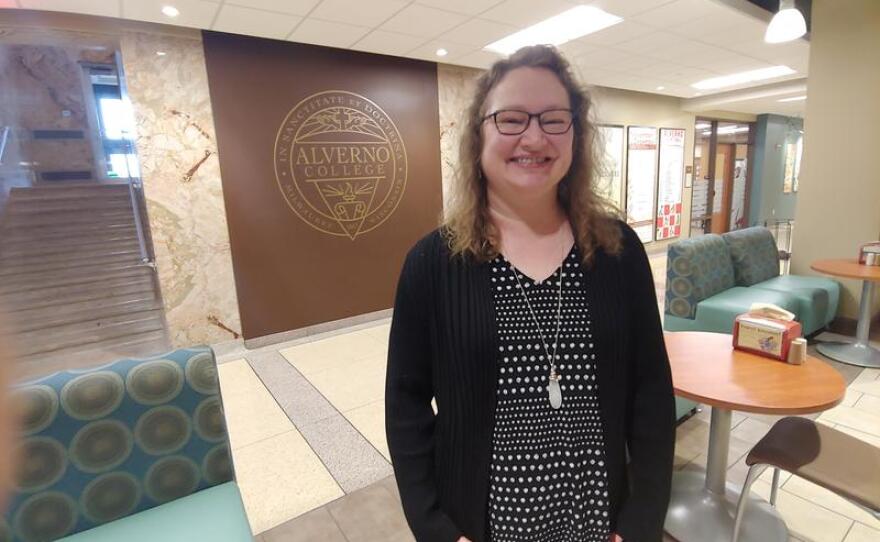Chronic wounds like foot or leg ulcers can take months or years to heal. They can be uncomfortable and sometimes lead to amputations. But a recent graduate is helping lead research that aims to do a better job of healing these chronic wounds.
Christina Megal just earned a doctorate of nursing practice from Alverno College, one of the first graduates of Alverno's new doctorate program. Megal's already been working at the Medical College of Wisconsin as a nurse practitioner, specializing in chronic wound care.
By one estimate, two percent of the U.S. population suffers from chronic wounds. The medical community has typically looked at underlying problems such as diabetes, vein disease, poor nutrition or vitamin deficiencies as reasons for the slow healing. But for her doctoral project, Megal has studied biofilm.

“What a biofilm is, is a collection of microbes from bacteria and fungi that have built themselves a small colony, and they've learned to secrete substance, by which they are protected," Megal said. “And this structure that they live in, protects them from the antiseptics and tools we use to try to remove it. So, they're very smart.”
Researchers are now using improved technology to study the DNA collected from a wound swab or tissue sample to get a more comprehensive list of the bacteria in that colony. Megal says more clinics are partnering with pharmacies to customize mixtures of antibiotics in ointment that are applied to the chronic wound.
It's an advance that can lead to healing weeks earlier, but Megal says it's not a complete cure.
“You know, if we don't address the diabetes, if we don't address the venous leg disease or the malnutrition, it's not the magic pill that's going to fix that wound. It may certainly help get rid of the bacteria and the biofilm living in the wound or decrease its growth. But we still have to help that person's body that owns that wound, get through and rebuild that tissue to fill that in,” Megal said.
She acknowledges some infectious disease specialists are concerned about using an antibiotic that was created for oral or IV use in an ointment, out of fear that could create more so-called superbugs — strains of bacteria that would then be resistant to other antibiotics. She says researchers are looking at other skin agents, known as topicals, that would not run that risk.
Support is provided by Dr. Lawrence and Mrs. Hannah Goodman for Innovation reporting.

Do you have a question about innovation in Wisconsin that you'd like WUWM's Chuck Quirmbach to explore? Submit it below.
_







